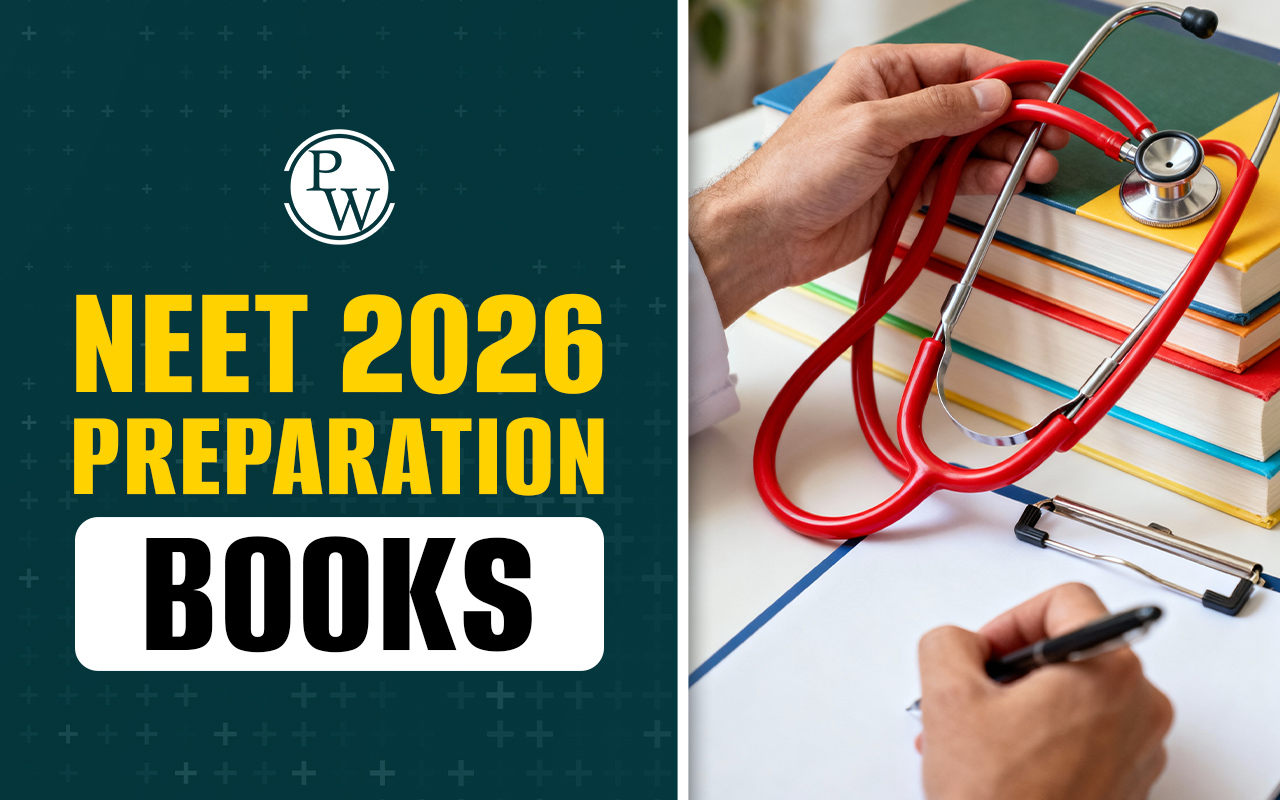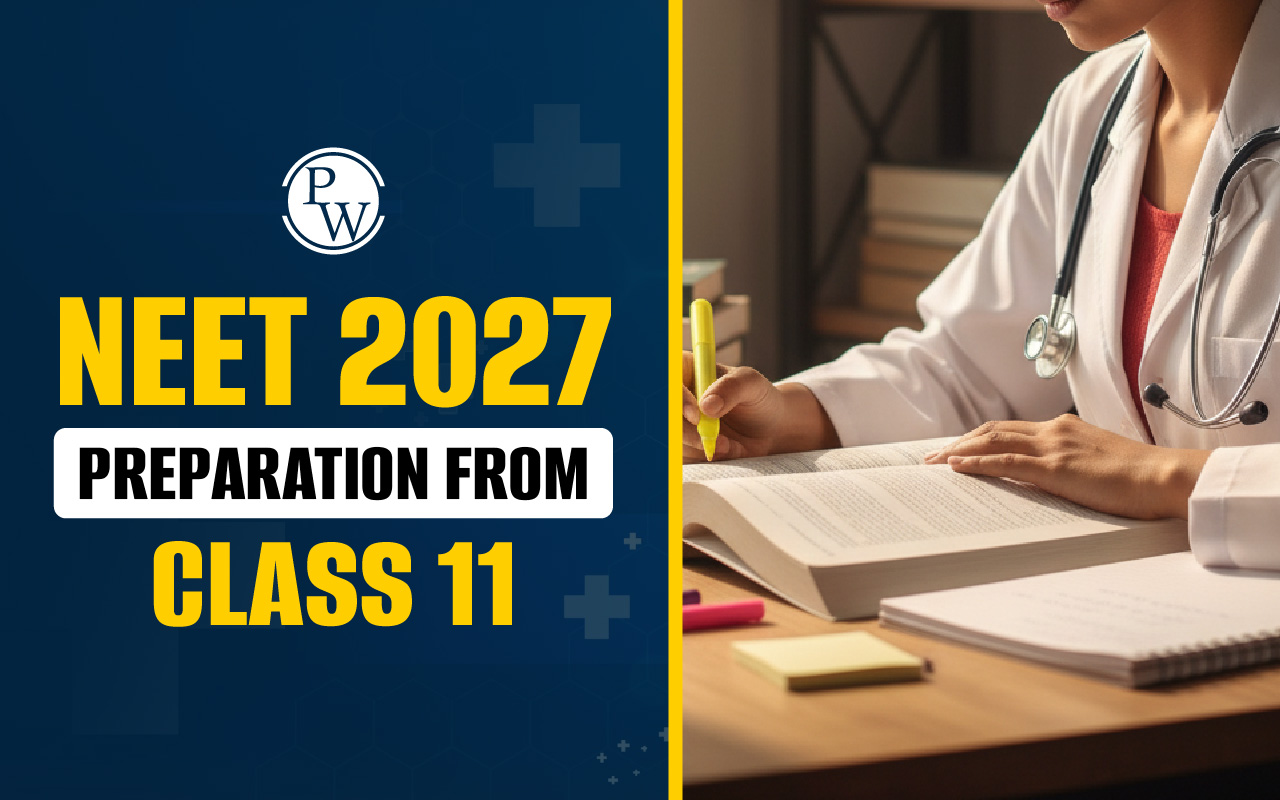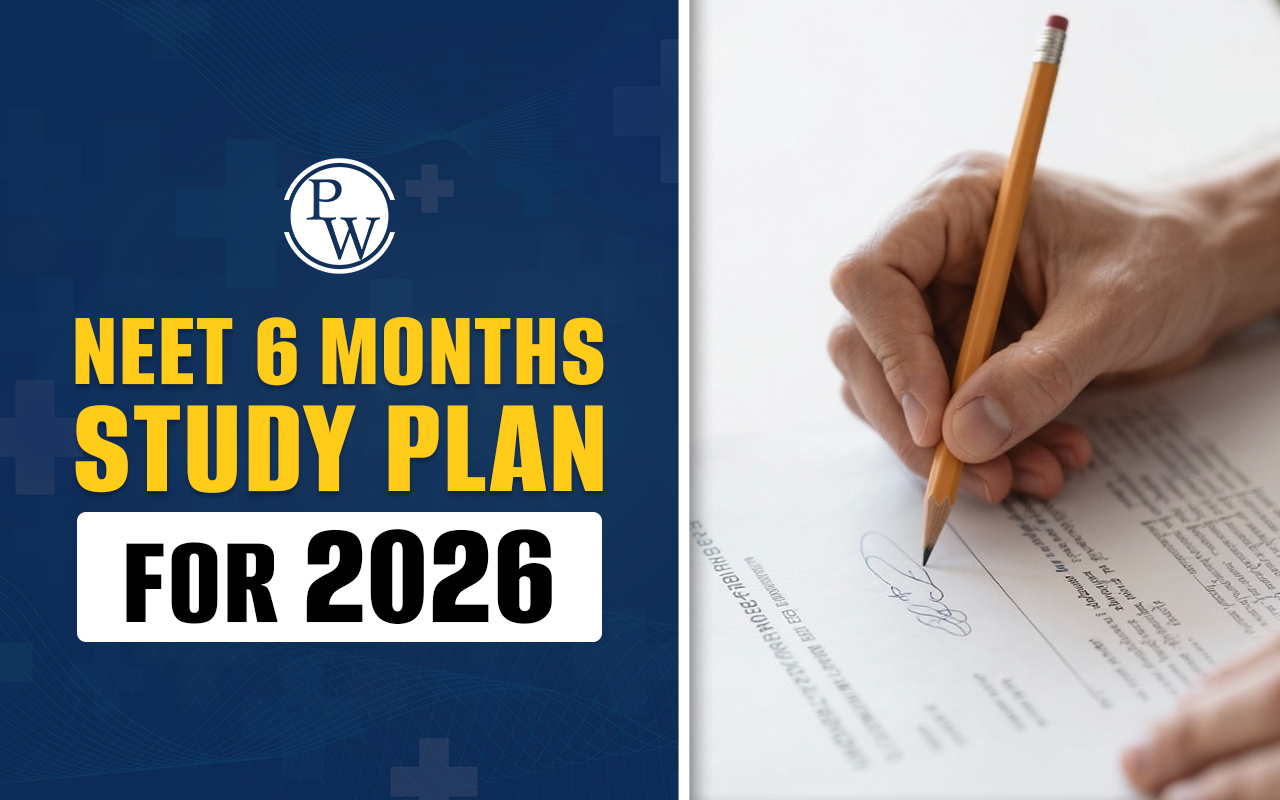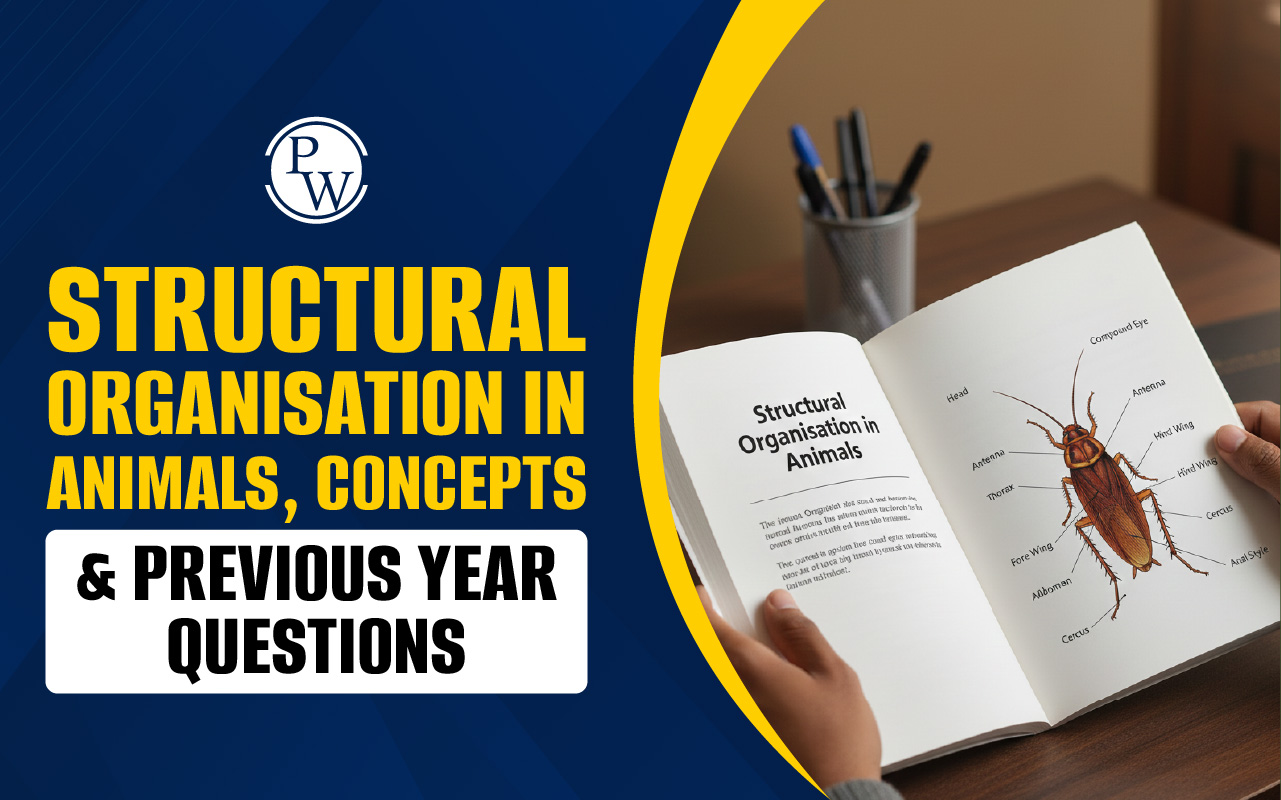
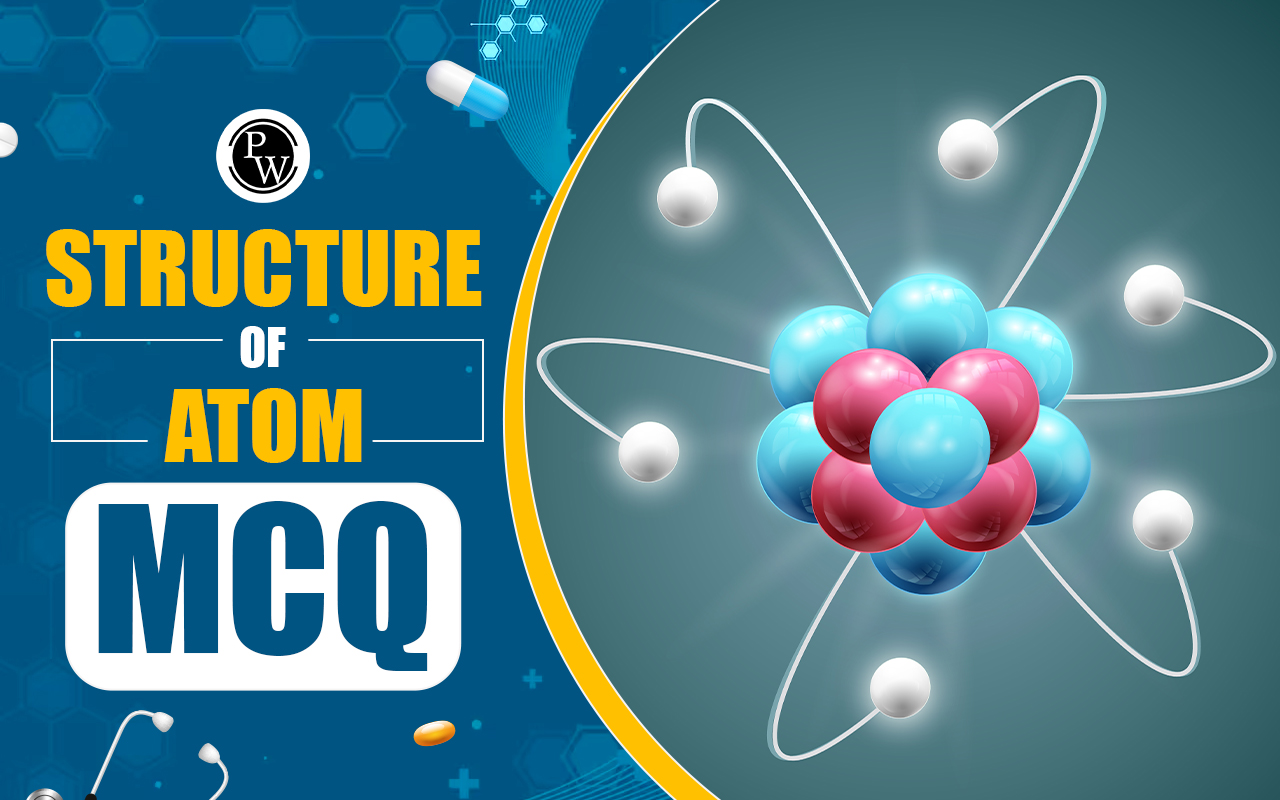
Structure of Atom MCQ: Structure of Atom MCQ is a key area in chemistry that examines atoms' composition, behavior, and properties. For NEET aspirants, understanding the Structure of Atom MCQ is essential as it forms the basis for more advanced topics in chemistry. The structure of Atom MCQ NEET set is designed to help students master this topic by focusing on important concepts such as subatomic particles, atomic models, electron configurations, and quantum numbers.
Structure of Atom MCQ NEET
Structure of Atom MCQ NEET is specifically created for NEET aspirants to test their understanding and application skills. Structure of Atom MCQ includes a variety of questions covering different aspects of atomic structure, from Bohr's model to the modern quantum mechanical model. By practicing with these Structure of Atom MCQs, students can assess their strengths and weaknesses in this chapter, allowing them to focus their study efforts more effectively.Also Check:
Structure of Atom MCQ Class 11
For Class 11 students, mastering the atomic structure topic is essential as it lays the foundation for Class 11 chemistry. The Structure of Atom MCQ Class 11 set aligns with the Class 11 curriculum, covering the fundamental principles of atomic theory, isotopes, isobars, and electronic configurations. Structure of Atom MCQs Class 11 help students solidify their understanding and prepare thoroughly for their exams, including Class 11 Ch2 Structure of Atom MCQ.| NEET Chemistry Important Links | ||
|---|---|---|
| NEET Chemistry Syllabus | NEET Chemistry Notes | NEET Chemistry Chapter wise Weightage |
Structure of Atom MCQ with Answers
Structure of Atom MCQ with Answers is an excellent resource for self-assessment and learning. This tool provides multiple-choice questions along with detailed explanations for each answer. This approach helps students understand the reasoning behind each answer, improving their comprehension of the subject matter. For Class 11 students, the Structure of Atom class 11 MCQ with Answers helps reinforce their understanding of key concepts, making it easier to study effectively and prepare for exams.1. Which of the following statements is not correct regarding cathode rays?
- Cathode rays originate from the cathode
- The charge and mass of the particles constituting cathode rays depend upon the nature of the gas.
- The charge and mass of the particles constituting cathode rays do not depend on the cathode's material.
- They possess kinetic energy.
2. Which is false concerning cathode rays?
- A stream of electrons
- Charged particles
- Can be deflected by the electric field
- Move with the same speed as that of light.
3. When was the electron discovered?
- 1896
- 1897
- 1898
- 1895
4. The charge on an electron was discovered by:
- J.J. Thomson
- Neil Bohr
- Chadwick
- Millikan
5. In the determination of charge to mass ratio, the deflection of electrons from their original path?
- Increases with the increase in the voltage across the electrodes.
- Increases with the decrease in the voltage across the electrodes.
- Decreases with the increase in the voltage across the electrodes
- Does not depend on the voltage across the electrodes.
6. The ratio of the mass of an electron to that of the mass of a hydrogen atom is:
- 1:3871
- 1:1296
- 1:1837
- 1:3781
7. The ratio of charge and mass would be greater for:
- Proton
- Electron
- Neutron
- a-particle
8. Positive rays or canal rays are:
- electromagnetic waves
- a stream of positively charged gaseous ions
- a stream of electrons
- neutrons
9. The e/m for positive rays in comparison to cathode rays is:
- very low
- same
- high
- none
10. Proton was discovered by:
- J.J. Thomson
- Goldstein
- Chadwick
- Max Born
11. What is wrong with anode rays?
- Their e/m ratio is constant.
- They are deflected by electrical and magnetic fields.
- They are produced by ionisation of molecules of the residual gas.
- They do not originate from the cathode.
12. The mass of a neutron is ______ times the mass of the electron.
- 1840
- 1480
- 2000
- None of these
13. The ratio of the specific charge of a proton and an a-particle is:
- 2:1
- 1:2
- 1:4
- 1:1
14. The lightest particle in the following is.
- a-particle
- Positron
- Proton
- Neutron
15. According to the Thomson model of an atom, the mass of the atom is assumed to be:
- uniformly distributed over the atom
- randomly distributed over the atom
- partially distributed over the atom
- None of these
16. a-particles are represented by:
- Lithium atoms
- Helium nuclei
- Hydrogen nuclei
- None of these
17. Rutherford's alpha particle scattering experiment eventually led to the conclusion that:
- Mass and energy are related
- Electrons occupy space around the nucleus
- Neutrons are buried deep in the nucleus
- The point of impact with matter can be precisely determined
18. Rutherford's experiment on the scattering of alpha particles showed for the first time that the atom has:
- Electrons
- Protons
- Nucleus
- Neutrons
19. The ratio of neutrons in C and Si with respective atomic masses 12 and 28 are:
- 2:3
- 3:2
- 3:7
- 7:3
20. Statement I: Isobars are identical in chemical properties.
Statement II: Isobars have the same atomic numbers.
- Both Statement I and Statement II are correct.
- Both Statement I and Statement II are incorrect.
- Statement I is correct and Statement II is incorrect.
- Statement I is incorrect and Statement II is correct.
21. The number of neutrons and electrons, respectively, present in the radioactive isotope of hydrogen is:
- 2 and 1
- 2 and 2
- 3 and 1
- 1 and 1
22. The nitride ion in lithium nitride is composed of:
- 7-protons + 10 electrons
- 10-protons + 10 electrons
- 7-protons +7 electrons
- 10-protons + 7 electrons
23. Statement I: Isotopes have the same chemical properties but different physical properties.
Statement II: Isobars have different chemical properties but few common physical properties.
- Statement I and Statement II both are true.
- Statement I and Statement II both are false.
- Statement I is true, and Statement II is false.
- Statement I is false, and Statement II is true.
24. Statement I: Isotopes have the same chemical properties but different physical properties.
Statement II: The chemical properties of an atom are controlled by the number of electrons in the atom.
- Statement I and Statement II both are true.
- Statement I and Statement II both are false.
- Statement I is true, and Statement II is false.
- Statement I is false, and Statement II is true.
25. The correct arrangement of the following electromagnetic spectrum in the increasing order of frequency is:
- Cosmic rays < Amber light < Radiation of FM radio < X-rays < Radiation from microwave ovens
- Radiation from FM radio < Radiation from microwave ovens < Amber light < X-rays < Cosmic rays.
- Radiation from microwave ovens < Amber light < Radiation of FM radio < X-rays < Cosmic rays
- Cosmic rays < X-rays < Radiation from microwave ovens < Amber light < Radiation of FM radio
26. Which of the following has the maximum wavelength?
- Cosmic rays
- g-rays
- Micro waves
- Radio waves
27. Rank the following types of radiations from the highest energy to the lowest. Ultraviolet/ visible/ X-ray/ microwave/infrared:
(X-ray, ultraviolet, microwave, infrared, visible (2) ultraviolet, X-ray, visible, infrared, microwave (3) infrared, microwave, ultraviolet, visible, X-ray (4) X-ray, ultraviolet, visible, infrared, microwave Answer: 428. The range of wavelengths for visible light is:
- 7800 Å to 1500 Å
- 1 Å to 100 Å
- 4000 Å to 8000 Å
- 8000 Å to 10,000 Å
29. The color of the sky is due to:
- Absorption of light by atmospheric gases
- Wavelength of scattered light
- Transmission of light
- All of these
30. Statement-I: K and Cs are used in photoelectric cells.
Statement-II: K and Cs emit electrons on exposure to light.
- Both Statement I and Statement II are correct.
- Both Statement I and Statement II are incorrect.
- Statement I is correct and Statement II is incorrect.
- Statement I is incorrect and Statement II is correct.
31. The number of photoelectrons ejected is directly proportional to :
- Frequency of radiation
- Wavelength of radiation
- Energy of radiation
- Intensity of radiation
32. The threshold frequency of a metal corresponds to the wavelength of x nm. In two separate experiments, 'A' and 'B', incident radiations of wavelength 1/2x nm and 1/4x nm respectively are used. The ratio of kinetic energies of the released electrons in experiment 'B' to that in experiment' A' is:
- 1/3
- 2
- 4
- 3
33. Statement I: According to Bohr's atomic model, electrons revolve in an orbit without loss of energy.
Statement II: Stationary orbit has an equal value of centrifugal and electrostatic forces.
- Both Statement I and Statement II are correct.
- Both Statement I and Statement II are incorrect.
- Statement I is correct and Statement II is incorrect.
- Statement I is incorrect and Statement II is correct.
34. Statement I: The radius of the second orbit of He+ is equal to that of the first orbit of hydrogen.
Statement-II: The radius of an orbit in hydrogen-like species is directly proportional to n2 and inversely proportional to Z.
- Both Statement I and Statement II are correct.
- Both Statement I and Statement II are incorrect.
- Statement I is correct and Statement II is incorrect.
- Statement I is incorrect and Statement II is correct.
35. The energy of an electron in a hydrogen atom in its ground state is 13.6 eV. The energy of the level corresponding to the quantum number equal to 5 is:
- – 0.54 eV
- – 0.85 eV
- – 0.64 eV
- – 0.40 eV
36. The ratio of the difference in energy between the first and second Bohr orbits to that between the second and third orbits is:
- 1/3
- 27/5
- 9/5
- 4/9
37. In the Bohr model of the hydrogen atom, the energy of the electron in its lowest orbit is:
- Infinite energy
- Maximum energy
- Minimum energy
- None of these
38. The ionization energy of a hydrogen atom at its ground state is:
- –1312 kJ/mol
- –328 kJ/mol
- +1312 kJ/mol
- zero
39. Assertion (A): Hydrogen has one electron in its orbit but it produces several spectral lines.
Reason (R): There are many exciting energy levels available.
- Both, Assertion (A) and Reason (R), are true and Reason (R) is the correct explanation of Assertion (A)
- Both, Assertion (A) and Reason (R), are true but Reason (R) is not the correct explanation of Assertion (A)
- If Assertion (A) is true but Reason (R) is false
- If Assertion (A) is false but Reason (R) is true
40. Assertion: According to Bohr, the angular momentum of an electron in an orbit is quantized.
Reason: Bohr's model of an atom could not explain the Stark effect.
- Both, Assertion (A) and Reason (R), are true and Reason (R) is the correct explanation of Assertion (A)
- Both, Assertion (A) and Reason (R), are true but Reason (R) is not the correct explanation of Assertion (A)
- If Assertion (A) is true but Reason (R) is false
- If Assertion (A) is false but Reason (R) is true
41. Which of the following is not a limitation of the Bohr model of the atom?
- Electrons move around the nucleus in circular, planar orbits.
- Electrons are only considered as particles and not as waves.
- It is possible to precisely determine the position and momentum of an electron simultaneously
- Electrons within atoms can only occupy quantised energy levels.
42. The splitting of spectral lines under the influence of a magnetic field is called:
- Zeeman effect
- Stark effect
- Photoelectric effect
- None of these
43. The spectrum obtained from a sodium vapor lamp is an example of:
- band spectrum
- continuous spectrum
- emission spectrum
- absorption spectrum
44. Statement I: The absorption spectrum consists of some bright lines separated by dark spaces.
Statement II: The emission spectrum consists of dark lines.
[AIIMS-2002]
- Both Statement I and Statement II are correct.
- Both Statement I and Statement II are incorrect.
- Statement I is correct and Statement II is incorrect.
- Statement I is incorrect and Statement II is correct.
Structure Of Atom MCQ FAQs
Q1. Why is it important to understand the structure of an atom?
Q2. What are the most important atoms for life?
Q3. What is a real life example of an atom?
Q4. How many oxygen atoms are there in a molecule of sodium peroxide?


